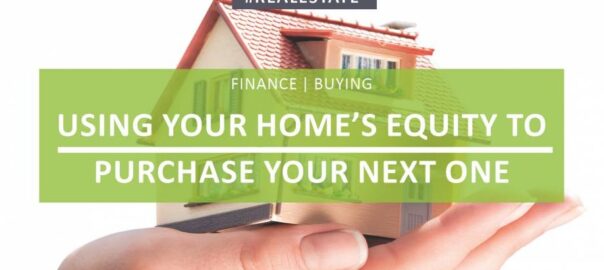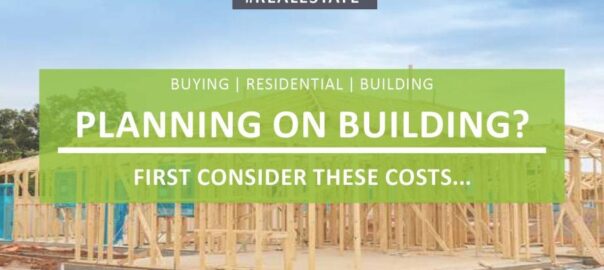Important first homebuyer lessons to teach your children
If 2018 is the year for your kids to hop onto the property ladder, first take a look at these ten valuable lessons you can teach your children to get them off on the right foot.
1. Be realistic as to what you can afford
Many young people have grand ambitions when it comes to their first house, far above what they can (and should) borrow to purchase.
Help your child by teaching them how to budget effectively, so they know exactly what they can afford.
Their budget should include all monthly expenses, including insurances, entertainment and of course, things like maintenance costs and rates that come with the responsibility of homeownership.
Once they have a realistic handle on their expenses, this can be subtracted from their income, leaving them with the amount they can afford to outlay on a monthly mortgage repayment.
The trick is then to only shop within your budget and avoid the temptation of looking at properties that are simply unattainable at this stage.
2. Make sure you capture all the expenses
Following on from the above point; when it comes to creating a realistic budget, you have to consider the additional costs that come with owning a home of your own.
First there are the purchasing costs, such as legal and mortgage fees, as well as furniture and whitegoods. Not to mention rates, insurances, repairs and maintenance that you don’t have to worry about when you live with mum and dad or rent from your landlord.
And if your first home is in an apartment complex, there will be annual strata fees payable.
It all adds up so make sure your child is aware of these hidden extras.
3. Get pre-approved
Before they start pounding the pavements, it’s important that first homebuyers find out exactly what type of mortgage the bank is likely to approve.
Knowing how much you have to spend means avoiding disappointment and importantly, being prepared when the right property presents itself.
This is particularly critical if your child wants to purchase in an area where auctions are the preferred method of treaty, such as in most inner suburbs of our major capital cities.
It also makes putting in an offer a smoother process, once you find the ideal property.
4. Don’t overcommit
While our first home might not be the palatial residence we dream of one day owning, it is the first step up the property ladder that can have a significant life long impact on the rest of your child’s journey.
It’s great to have a wish list, but it is important that your children understand compromises will have to be made if they are to remain in the realms of financial reality and not overcommit from the very beginning.
Remember, most of us will upgrade every seven to ten years, so remind them that this is not necessarily going to be their forever home.
5. Look past the little flaws
If your child were to purchase something that needs a little cosmetic work, they can add value and increase their equity, putting them in good stead to continue climbing onwards and upwards and potentially invest in further properties for their future retirement fund.
This requires a bit of vision and a willingness to do some manual labour, but is a worthwhile strategy for first homebuyers to adopt.
Aside from the economic gains to be made in acquiring a fixer upper, there’s also less chance they will pay a premium for the high spec finish achieved by the previous vendors.
You’re far better off paying less at point of purchase and having to put in some elbow grease, than paying for someone else’s hard work.
6. Agree on your compromises
Some things are non-negotiable when it comes to shopping for a first home.
What those specifics are will depend on the stage of life your child is at and their immediate plans for the future.
If they have recently gotten married and are planning on starting a family, a one-bedroom apartment is obviously not ideal.
Make sure they have a clear distinction between their ‘must-haves’ and those features that are more cosmetic than practical.
7. Future-proof as much as possible
When it comes to buying their first home specifically, future planning should include not only their personal needs and desires, but also what the market they are buying into will look like in ten years time when they might be thinking of moving on and selling, or using the equity in their home to purchase another property.
Does that particular property in that particular location represent a good long-term investment, as well as a cozy first home?
This will no doubt require some legwork and research into things like local school zones, future zoning council changes or planning policies from local and state government that might change the aesthetics or value of the property.
8. Suss it out before signing
It’s important that your child inspects the property carefully and more than once to really assess its suitability.
This means visiting during the day, as well as at nights and on weekends when different factors might impact the noise levels and general environment.
They want to see the home in different lights and take in the aspect of different rooms to get a better idea as to how much it will cost to heat and cool, which can really impact the affordability and livability of a property.
Advise them to talk to neighbours if possible and if the home is tenanted, to the current residents to get their take on living in the premises.
9. Get it checked out
It’s advisable that first homebuyers (or any purchaser for that matter) obtain building and pest inspections from properly qualified professionals.
If the previous owners have made any improvements or extensions, you need to qualify that the correct permits were in place for the completed works.
10. Don’t be scared to negotiate or walk away
Teach your child the necessary skills to negotiate effectively and importantly, give them the confidence to know when to walk away from a deal that’s simply not going to tick all of their necessary boxes.
Are you thinking about buying your first home? We can help! With experienced agents, great properties available, and a wealth of knowledge to guide you through the process, make Naked Edge Real Estate your first call.
View our currently available listings here.









